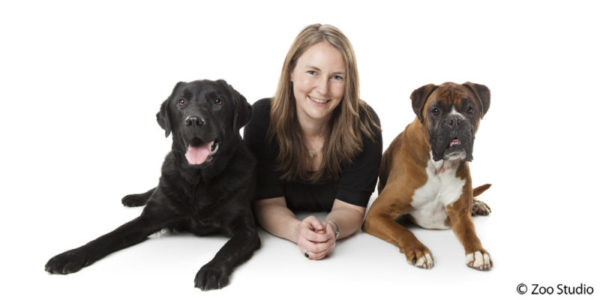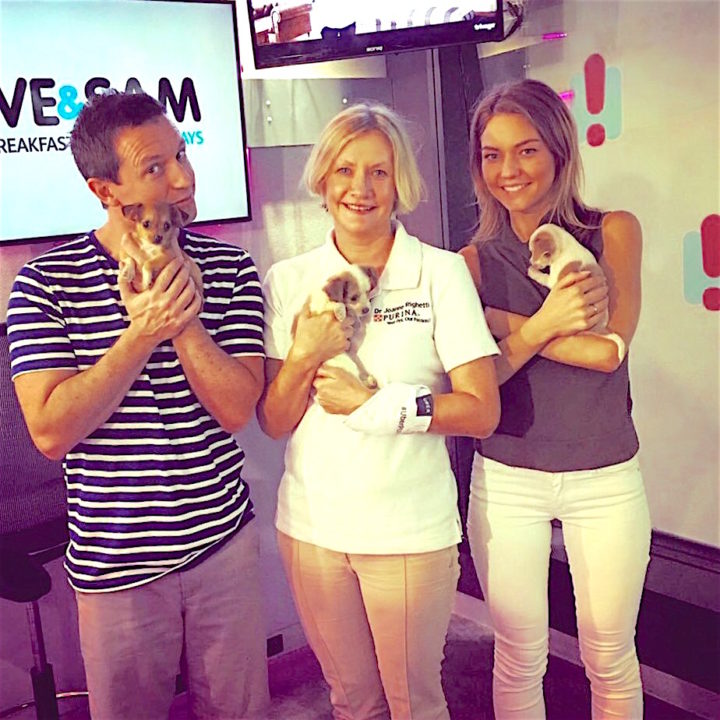Shelter dog trends – Past present and future
A review* of shelter dog trends, including dog adoption, ownership and the human-canine relationship in the US has revealed interesting trends in shelter dog intake, canine adoption and sterilization rates over the decades and ultimately the human-canine relationship in the US.
Pet Problems Solved discusses some of the interesting shelter dog trends from the review…

.
Shelter dog trends in the USA
.
1. Dogs roamed in the 1960s and many were euthanized
In the 1960s, one-quarter of the dog population was roaming the streets, whether owned or not. Compared to today, 10 to 20 times more dogs were euthanized in shelters.
It is difficult, however, to estimate shelter statistics across all cities and States and even owned populations can be a guesstimate, especially in early years of record keeping.
.
2. Shelter growth in the USA
In the early 1900s, there were around 500 humane societies and SPCAs, working with both animals and children. In the late 1950s, there were only 350 or so active shelters but, by 2015, this number had grown to around 3500 shelters in 3100 counties.

3. In the 1970s, 20% of owned pets were euthanized
In the early 1970s, The Humane Society (The HSUS) estimated that about 20% of the owned pet population was euthanized. That’s a staggering 13.5 million animals; 64 dogs and cats per 1000 people.
In most shelters and pounds, over 90% of the incoming animals were euthanized!
Taking in animals, caring for them for a few days then ending their lives consumed all available budgets, with none left for educational or other programs. At this time, the pet overpopulation crisis became a national issue and more humane and sustainable solutions began to be discussed.
Progress during the 70s saw shelter Intake and euthanasia numbers decline, due to sterilization policies of shelters, sterilization practices by vets, breeder licensing and the introduction of differing license fees for intact and sterilized pets.
.
4. Sterilization (desexing) rates
Low-cost sterilization clinics have helped with an increase in sterilization rates, although private sterilizations still account for most sterilization practices. In recent years, mobile clinics and voucher systems have also assisted in reaching people. Good news, as people who cannot afford sterilisation, may also not be able to afford a car to transport their pet to a veterinary facility.
In 1984, New Jersey State was the first in the country to address its pet overpopulation problem with a statewide low-income, low-cost, spay/neuter program.
To show how sterilization rates have increased, in the early 1970s, less than 11% of dogs were sterilized in Los Angeles city, according to dog licensing data. In just a few years, this desexing rate jumped to 50% and now it is almost 100%.

5. The 80s and 90s saw a decline in shelter surrenders
By the mid-1980s, shelter intake had declined by about 50%. Microchips were also introduced at this time which should help with returning animals to their homes, although it would take more years before uptake was common and scanners were able to universally read each different type of microchip.
Since then, there has been a slower but steady decrease in shelter animal intake and euthanasia.
.
6. In the 2010s dog adoption is rising
From 2010 onwards, increased adoptions also started to have an effect on euthanasia rates. Understandably, as dogs are adopted from shelters, the euthanasia rate declines. More dogs in shelters and pounds are now also being returned to their owners, perhaps due to the more effective use of microchip identification.
In just 10 years, the percentage of pet dogs that were sourced by adoption from shelters and rescues has increased from 15% to over 35%. The percentage of pet dogs bred at home has dropped from 5% to under 1% over the same time period.
People are also making more purposeful adoptions, specifically choosing to adopt, as opposed to acquiring a stray dog or an acquisition from family of friends.

7. State statistics in dog trends
Apparently (unknown to this non-US resident) there has been a perception of a Northeast US region, with very few adoptable dogs in shelters, and an ongoing dog overpopulated South. Perceptions can be very different to reality, however, and so any national statistic gathering could be very useful. As with most areas of the world, a national system of collating shelter statistics is difficult to achieve.
- New Hampshire euthanized 0.26 dogs per 1000 people in 2012.
- North Carolina euthanized almost 25 times more dogs (6.45 dogs per 100 humans) in 2013.
- Nevada euthanized 21 times more dogs (5.39 dogs per 100 humans).
- California euthanized 18 times more dogs (4.69 dogs per 100 humans) than New Hampshire.
An analysis of dog shelter intake and euthanasia in California from 1997 through 2013 shows county variation, with counties achieving low rates of shelter euthanasia while others are closer to the national average or even higher. As in other states and across the country, however, there is still an overall significant decline in dogs entering shelters and in the euthanasia rate. All good news!
“Today, there are very few street dogs, the euthanasia rate of dogs in shelters has fallen by over 90%, while the total pet dog population has doubled.”

8. Dog trends: Dogs are family
A cultural shift in how society and pet owners relate to dogs has influenced shelter trends. Compared to the 1970s and before this, when 25% of pet dogs roamed the streets, most of us cannot imagine a time that we would let our dogs wander on their own!
Dogs are now perceived as being family members. With this goes an increased level of owner care and control of dogs; indicators of the changing human-dog relationship in the US. These contribute to a decrease in animal surrender and an increase in adoption.
Today, there are very few “street” dogs, the euthanasia rate of dogs in shelters has fallen by over 90% while the total pet dog population has doubled.
Our canine family members are now more likely to sleep in our beds and to receive presents on their birthdays.
.
9. Dog trends: Dog expenses
Pet owners now spend more on their pets. Since the 1950s, over 5 times the amount of money is spent on pet products and 3.3 times more on veterinary services. Interestingly, there was no relative increase in expenditures between 1975 to 2000 but, since 2000, spending on pets has been growing faster than general consumer expenditure. Again this signifies our attachment to our pets.

What about future dog trends?
- The large number of small rescue organisations may be significant, in recent years and in the future, in increasing dog adoptions. Many of these smaller organisations take pets from larger shelters, who traditionally have higher euthanasia rates, and find homes for them. In rehoming (as opposed to surrendering and rehoming), they are able to highlight their no-kill status, something that a larger surrendering facility generally cannot do. Both types of rescue are likely to be necessary for the highest possible adoption rates.
- As the number of surrendered dogs continues to decrease over the coming years and adoption rates rise, the available population of shelter dogs will decrease. This will encourage potential owners to look elsewhere for their pets: Online sales for example. Thus, regulations of these suppliers may be desirable.
- As numbers of dogs seeking homes declines, the purpose of shelters and rehoming organisations may change with education becoming a greater priority. Alternatively, turning towards other issues may become more mainstream and we may see an increase in animal activism.
.
About the author:
Dr Jo Righetti is an animal behaviourist and owner of this website Pet Problems Solved. Dr Jo lives with many rescued shelter pets and has on ongoing interest in pet adoption and welfare. Dr Jo is an Ambassador of Animal Welfare League Australia.
More shelter pet and animal welfare reading
- 10 things we do that puzzle and scare horses10 things we do that puzzle and scare horses Kenny Webster/Unsplash, CC BY Paul McGreevy, University of Sydney and Cathrynne Henshall, Charles Sturt University Horses, like
- Companion Animal Rescue Awards back to inspire pet rescue2019 Companion Animal Rescue Awards launched today and what a lovely morning we had playing with kittens… Companion Animal Rescue Awards back to inspire pet rescue
- Animal feelings will finally be recognised by lawANIMAL FEELINGS WILL FINALLY BE RECOGNISED BY LAW Pet owners know their pets have emotions but could our laws be a step closer to recognising animals
- Preventing animal cruelty is physically & emotionally risky for front-line workersPREVENTING ANIMAL CRUELTY IS PHYSICALLY & EMOTIONALLY RISKY FOR FRONT-LINE WORKERS If you love pets then you’ll hate animal cruelty. Preventing animal cruelty falls to a
- Who commits animal cruelty and how they are punishedAre you concerned about cruelty to animals and the, often, light punishments that are served to offenders? This report sheds light on the situation in Victoria,
- Novempurr Cat Adoption Drive and Health Check for Your Feline FriendNovempurr cat adoption drive and health check for your feline friend Novempurr Cat Adoption Drive and Health Check for Your Feline Friend As a
- 3 tips to protect your pet ahead of a disaster3 tips to protect your pet ahead of a disaster Disaster strikes! Are you prepared? What about your pets? In the event of a disaster, best be
- What is Animal Law?What is animal law? What is Animal Law? Should we understand it? Should lawyers practice it? Do animals need it? Voiceless has the answers for Pet








Comments are closed.